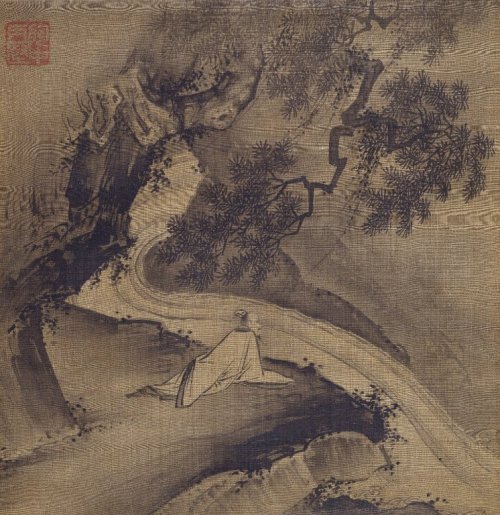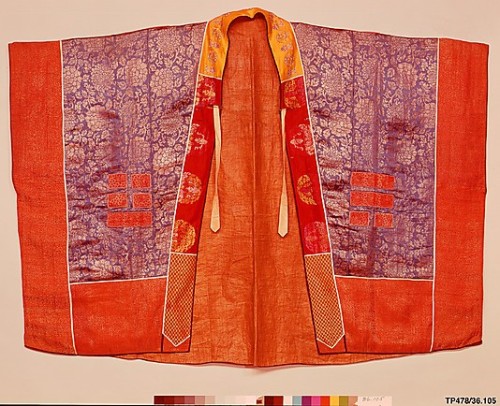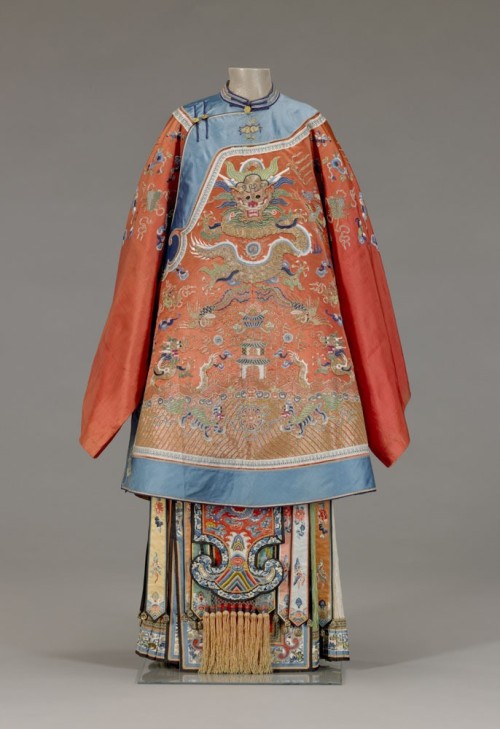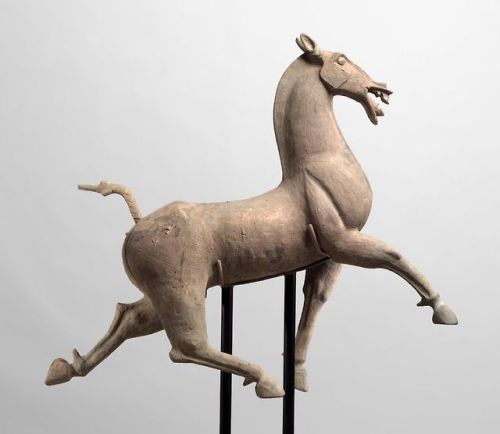#chinese art
Bodhisattva Avalokitesvara, details of a painted roll, ca. AD 1500. Mogao caves, Dunhuang, China.
Post link
He was a young artist employed by the Disney studio, but tasked with the entry-level job of finishing off the work of the animators and crafting the “in-between” animations that completed the characters’ movements. Wong had learned that studio executives were creating a film from the new novel, Bambi, A Life in the Woods by Felix Salten. Tom says the young artist read the book and without consulting his supervisor, “took the script and painted some visual concepts to set the mood, color and the design.”
His sketches recalled the lush mountain and forest scenes of Sung dynasty landscape paintings. His initiative paid off. Walt Disney, who was looking for something new for the film, was captivated and personally directed that Wong be promoted. Today, top animators and illustrators revere Wong’s work. Children today are as enchanted by the misty, lyrical brushstrokes of Wong’s colorful nature scenes, inspired by his training at Otis College of Art and self-study of Sung Dynasty art
FollowUltrafacts for more facts
HE’S STILL ALIVE
HE’S 105 YEARS OLD AND HE’S *STILL FUCKING ALIVE*
THIS GUY HELPED MAKE THE FILM THAT MADE ME WANT TO BE A FILMMAKER AND *HE IS STILL ALIVE*
AAAAAAAAAAAAAHI met him at a gallery event a number of years ago and, UGH HE IS SO TALENTED AND SO KIND AND ENCOURAGING THERE IS A REASON WE ALL LOVE HIM. Also, my alma.
Post link
Plum blossom by moonlight (Chinese, Qing dynasty ) by Jin Shen.
Fan, album leaf. Ink and colours on silk.
© The Trustees of the British Museum.
Creative Commons Attribution-NonCommercial-ShareAlike 4.0 International (CC BY-NC-SA 4.0) license.
Post link
Installation views of our exhibition Conversations: Past and Present in Asia and America on view through May 21, 2017.
Inspired by the AMAM’s 2016–17 theme of “Time,” this exhibition bridges wide temporal and cultural distances, linking the works of artists from China, Japan, Korea, the United States, and Canada, both well-known and anonymous, living and long gone. In the fall of 2016, the exhibition will feature paintings and calligraphy that reflect the lasting legacy of the Chinese literati tradition.
For the spring 2017 semester, a fresh rotation of works highlights adaptations by contemporary East Asian and Asian-American artists of the graphic sensibilities of Pop Art and Japanese ukiyo-e woodblock prints, along with the creative reworking of imagery from historical photographs. On view throughout the year will be contemporary ceramics that respond to various East Asian ceramic styles.
These “conversations” do not simply mimic the past, but engage it in a dialogue that references earlier subjects, styles, mediums, and techniques and infuses them with the artist’s contemporary reality. They may take the form of respectful imitation, creative reinterpretation, bitter critique, ironic send-up, and sometimes all of these at once.
The exhibition is organized by Kevin R.E. Greenwood, Joan L. Danforth Curator of Asian Art.
Post link
Burial Suit of Princess Dou Wan, Tomb of Liu Sheng, Hopei, Mancheng, China (2nd century BCE)
Post link
Buddhist Temple in Mountain - Li Cheng (c. 919 - c. 967 AD)
A Solitary Temple amid Clearing Peaks (晴峦萧寺).
Post link
Totems I II III
excuse my white ass as I culturally misappropriate several non-white that I absolutely no genetic connection to
I just ran with an idea I had when I tripped over a dead bird in the middle of the street. It wasn’t as pretty as a rainbow lorikeet but all dead animal squished and crawling with with bugs are kind of beautiful in their own way
Post link
Spouted Ritual Wine Vessel with Cover (Gong)
Period: Western Zhou dynasty (1046–771 B.C.)
Date: mid-10th century B.C.
Culture: China
Medium: Bronze
Animal Ewer (Guang or Gong) - Bronze Age Chinese
(1046 - 771 BC)
Bronze ewers, like this one appeared late in the Shang dynasty and continued to be made throughout the Zhou dynasty. Also called guangs (gongs), these bronze ewers are distinguishable due to some characteristic features: a zoomorphic lid and handle, usually a one-footed base, the use of the squared spiral (lei-wen) to fill in empty space and they are decorated in mid to low-relief. Naturalistic representations of live animals were mainly produced in the southern Chinese provinces, while mythical animals were seen on guangs from the northern Chinese provinces. For this particular ewer I was not able to distinguish whether is depicts a mythical animal or a real one. However, rams were commonly depicted on these, and this creature sports head gear that could be interpreted as rams horns.
Ewers like these would have poured rice (or grain) wine at ancestor worship rituals and were commonly left behind as a grave good in a high-status burial.
Info. from Freer and Sackler Galleries andWikipedia
Post link
~Vaisravana - Pisha Meng, Guardian of the North.
Place: China, Tangut State of Xi -Xia, Khara-Khoto
Date: 13th - 14th century
Vaisravana - Pisha Meng, Guardian of the North - Chinese/Tangut
ca. 1200 - 1300 CE
Vaisravana is the name of the chief of the four heavenly kings of Buddhism. He is usually portrayed with a yellow face, an umbrella and occasionally a mongoose or with jewels coming from his own mouth. This piece – I have not been able to find any information regarding this specific piece, or much information regarding the deity depicted here.
Source:Wikipedia
Artwork located at the State Hermitage Museum
Post link

Chinese landscape painted on a teacup. Ultra blue stanning color

Brooklyn Museum, ‘Scholar Contemplating a Cascade’: “The sixteenth-century ink-wash painting, a type rarely found outside Korean collections, uses strong, deliberate brushwork to convey ideas of space and perspective. Yi Chong, a Buddhist monk who came from a renowned family of artists, was a respected court painted during his short life. His work was heavily influenced by the Chinese tradition of the scholar-artist. The style of this painting invokes the Zhe School of Ming dynasty China, and the subject alludes to a poem by the Chinese poet Li Bo (701–762) concerning the beauty of a waterfall.”
Post link
Horse (made for a tomb)
Artist/maker unknown, Chinese
Made in China, Eastern Han Dynasty (25-220)
25-100
Earthenware with traces of painted decoration
Philadelphia Museum of Art
Post link


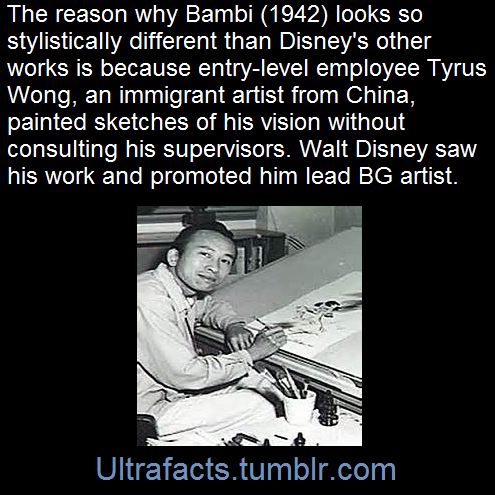

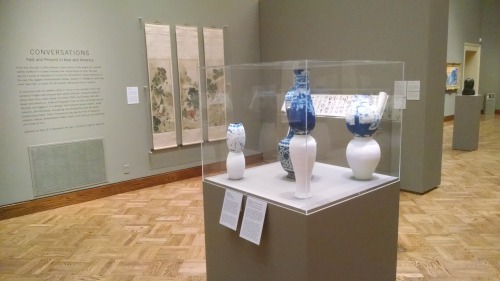

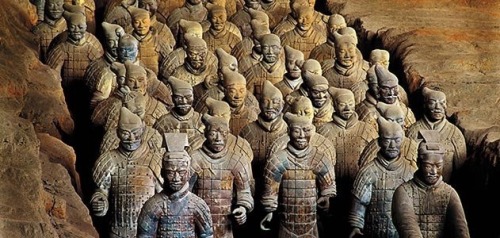
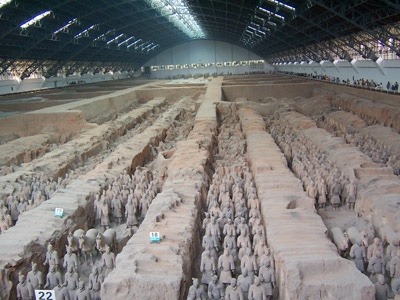

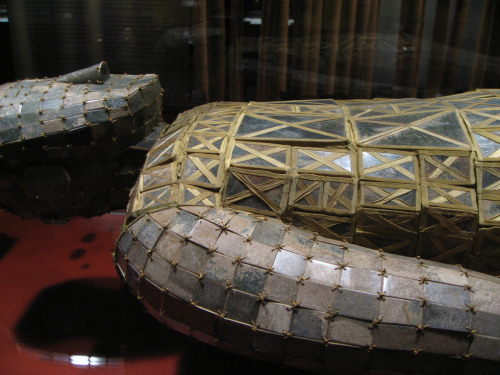




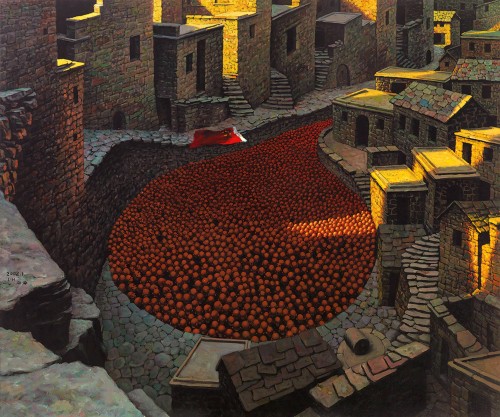

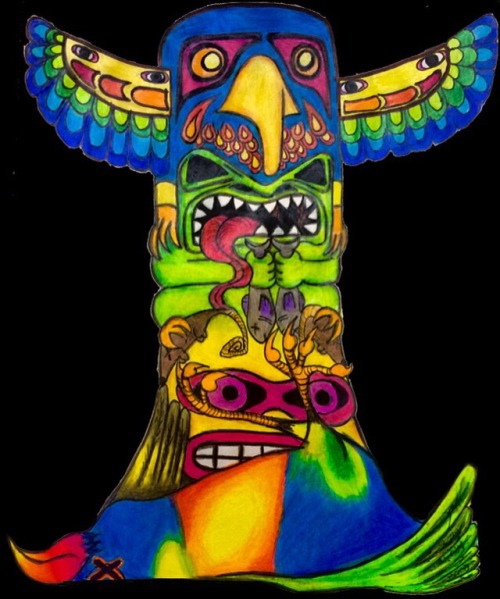
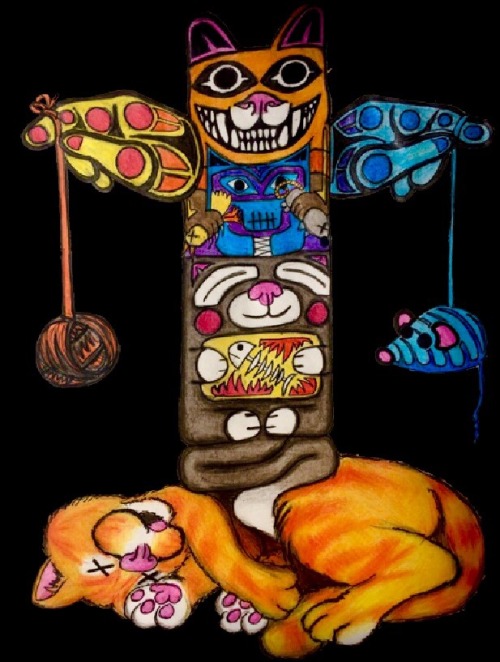

![Zhang Xiong, Qing dynasty] Zhang Xiong, Qing dynasty]](https://64.media.tumblr.com/52ffc423a2d082b380432de65d105ad1/d7d349f0a856a2fe-73/s500x750/fa2417fc19cfadd4f316c8053bdcda820e5d3ea2.jpg)






